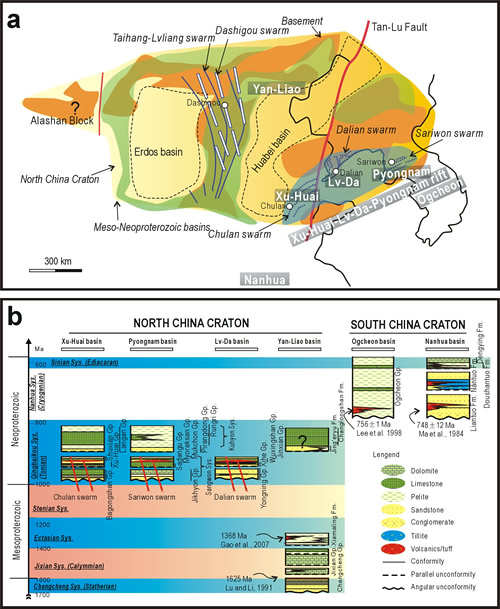Vice Professor PENG Peng and his team investigate the Sariwon sills in the Pyongnam basin at the center of the Korean peninsula, eastern part of the North China Craton.
They provide precise geochronological data on one of the Sariwon sills in the Pyongnam basin in the central Korean peninsula. This sill swarm is coeval and show characteristics similar with the Chulan sills in the Xu–Huai basin and Dalian sills in the Lv–Da basin, and could be originally part of the same swarm. Bulk chemical features shows these sills might have originated from a depleted mantle source (e.g., asthenosphere, or a juvenile lithospheric mantle), suggesting significant mantle upwelling during Neoproterozoic under the NCC. They suggest that these rocks probably belonged to the same Neoproterozoic rift system. The sills, as well as the strata in the basins, have undergone late metamorphism and deformation, possibly at ~400 Ma and probably resulting from a continent-margin process along the southeastern margin of the NCC and can be linked with the Qinling–Qilian orogen located along the southern margin of the NCC. And the southeastern margin of the NCC was not likely a side facing the inland of the Rodinia in the configuration of this supercontinent.
Peng et al. Neoproterozoic (~ 900 Ma) Sariwon sills in North Korea: Geochronology, geochemistry and implications for the evolution of the south-eastern margin of the North China Craton. Gondwana Research.2011, 20: 243-254 (Download Here)

Fig.The distribution of rock bed base and related rift in North China Craton ~ 900 Ma andNeoproterozoicstratigraphiccomparison. (Image by PENG).